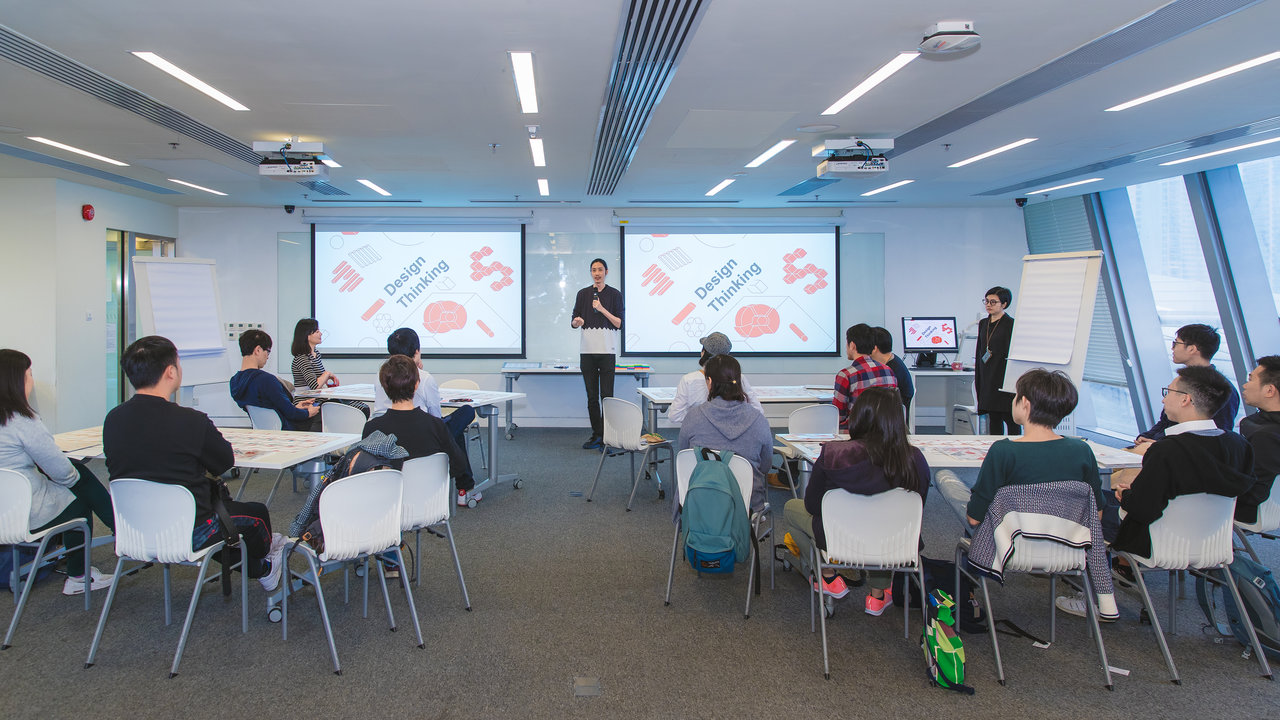Author: Sunny Wong
Editor/ Translator: Centre for Translation Studies, Department of Chinese and Bilingual Studies, The Hong Kong Polytechnic University
Every one of us has his or her unique imagination on what education should entail. However, curriculum design has long been a process dominated by policymakers and educators. Where the students’ voice should be?
More often than not, curriculum designers are the sole determiner of the scope of learning, assessment criteria for students, and the most efficient method of delivery. In recent years, there have been discussions regarding “Student-centred Learning”. Some educators believe that students should be the one deciding their learning methods and establishing their own knowledge through experiences and interactions.
“User-centred Design” is a similar concept in the field of design, which emphasises on the users’ involvement in the design process. In every stage of the design process - from defining problems to forming solution, the user’s feedback is reflected immediately in the design. This ensures that the final solution is the ideal version.
When designing the curriculum of “SoInno Design Education”, we try to explore whether we can apply the principle of “User-centred Design” to “Student-centred Learning”. Students, as a group of users, can refine their learning experiences. We believe students’ motivation and autonomy to learn can be enhanced only when they feel that they own the learning processes and outcomes.
Keyword Cards of Education to Inspire Conversations
To understand students’ worldview, we have to step into their daily lives. We went to their schools to listen to their feelings, thoughts and expectations on education. However, discussions around education can be broad and abstract, which confuses students easily. They don’t usually know where to begin. In light of this, we created a set of keyword cards of education to start the conversation.
On each card, there is a keyword referencing international education theories and trends. The words are picked out to represent the essential elements in learning in the 21st century. The keyword cards not only summarize the key concepts in education, but they also provide an evidence-based foundation on the topic of education for students to carry out dialogues. They can extend their unique viewpoints and exchange ideas with others by learning from the similarities and differences between them. Thus, they can enhance their mutual understanding and build consensus.
During the discussion, students had to pick a card with the word that they thought or felt was the most important. Then, they were asked to share the reasons for choosing the card. In the last session, they carried out a “card battle” by explaining why they thought their cards are more important than others.
|
The Making of Keyword Cards of Education The project team took reference from prominent education theories and chose 38 keywords they consider can represent the current situation in education. They can be sorted out in the following 3 categories: “To Gain or Learn”: Skill sets required in the 21st century are ever-changing. Students have to diversify their learning outcomes. This category of cards includes “Problem-solving”, “Empathy”, “System thinking”, and etc. “Learning through”: The modes of learning and teaching are shifting from the traditional one-way teaching and rote memorization. Students have to master new learning methods. This category of cards includes “Self-directed learning”, “Enquiry based learning”, “Interdisciplinary”, and etc. “And…”: In the learning process, students’ mindset will affect their learning process. This category of cards includes “Reflection”, “Trust”, “Metacognition”, and etc. |
Students have insightful understandings on learning methods and outcomes
How large is the gap between the ideal education cited in theories and the reality that students are facing?
In the beginning, students stuck to the familiar one-way experience in the classroom. They hesitated to choose the card and express their ideas. But they opened up and talked about their thoughts once trust was built. We discovered that students were much more thoughtful than we had anticipated. They did not only share their views on the everyday learning experiences, but they also dived deep into complex issues and shared their profound reflections on different learning modes.
One student chose the card “Social Emotional Learning”. He recognised that human interactions are a very large part of our daily life. Although he is still in school, he already understands that he will face a more complicated world after graduating and understand the importance of learning to get along with others.
https://www.youtube.com/watch?v=nM3trcW4-8I
Two other students chose “Flexibility” and “Facing changing skill set”. Both of them said learning and teaching should not only focus on textbooks because it would disconnect students from reality.
Indeed, the future is unpredictable, students will be facing challenges far greater than exams. They need to be adaptable to changes.
Reimagine Education - A Student’s Viewpoint
Some students surpassed our expectations and gave a new interpretation of the words, inspiring all educators.

A student chose “Trust” and said, “If teachers didn't trust students, students would not be able to learn anything.”. When we were designing this card, we were only thinking of how teachers should earn students' trust. But his answer exceeded our expectations – teachers should simply trust first.
This response inspired us to reimagine the teacher-student relationship. In the era of knowledge and information explosion, students’ learning modes are shifting. It is vital for teachers to rethink how to facilitate the learning process with a more equal relationship and learn from each other.
Listen to Students - A More Human-centric Education
After listening to the students, we realised that our assumption was wrong - students are not passive receivers. Instead, they are self-aware and serious learners. This first-hand information let us know what are students true concerns. This experience helped form a basis for us to design the “SoInno Design Education” programme.
Starting today, we may try to put aside our assumptions of students. Instead, we should actively approach and understand them. This is how we can design a student-centred learning experience. With an education like this, educators can and grow alongside students together.


